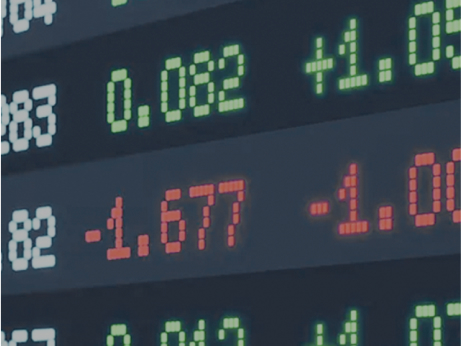Still medium-term positive on gold
Still medium-term positive on gold
We remain constructive over the medium-term outlook for gold, underpinned by expectations that the Fed will continue easing its policy into 2026, rates should trend lower overall, and central bank and institutional diversification demand should stay strong.
Selena Ling
Head, Global Markets Research & Strategy,
OCBC
Oil
Looking ahead, we believe the volatility in oil price movements has stabilised, driven by a delicate balance between increasing OPEC+ production (OPEC+ announced another production hike for December) and concerns over supply disruption from US sanctions against key Russian oil companies. For 2026, we expect oil prices to ease further, with WTI and Brent averaging US$59/barrel and US$62/barrel, due to a favourable supply outlook.
Precious Metals
Gold
After a remarkable rally, gold prices experienced a correction. The pullback largely reflected the unwinding of momentum-driven positions and a reset of macro-optimism as short-term supports faded. Renewed trade diplomacy between the US and major partners such as China, Brazil, and Japan reduced geopolitical risk premium and safe-haven demand. Meanwhile, US Treasury yields climbed ahead of the October Federal Reserve (Fed) policy meeting and Fed Chairman Jerome Powell said that a December rate cut was “not a foregone conclusion”. The Fed’s stance supported both Treasury yields and the US Dollar. Higher nominal yields and a firmer US Dollar dampens the appeal of non-yielding assets like gold.
Although the correction in gold prices was sharp, it is not a complete surprise as it comes after a surge in prices and it helps to restore healthier positioning and valuations. We remain constructive over the medium-term outlook for gold, underpinned by expectations that the Fed will continue easing its policy into 2026, rates should trend lower overall, and central bank and institutional diversification demand should stay strong. Gold’s role as a portfolio hedge against fiscal and policy uncertainty remains intact, even if short-term exuberance gives way to some consolidation.
Silver
Silver rallied sharply before a correction set in. The surge reflected severe market tightness, strong macro tailwinds, and spillover strength from gold. Lease rates had spiked, spot–futures spreads flipped into backwardation, and London inventories fell — all of which pointed to a squeeze in physical supply. ETF inflows and rising speculative longs further amplified the rally.
A correction set in, as the squeeze eased and sentiment normalised. Lease rates fell while cross-border shipments from China and the US replenished London inventories, bringing down borrowing costs.
The correction was healthy, and the medium-term picture remains constructive. Silver benefits from its dual role as a precious and industrial metal. Its safe-haven appeal mirrors gold’s drivers, while strong industrial demand from the solar, EV, and electronics sectors underpins real consumption. With global growth still resilient and Fed easing expectations intact, silver remains in a sweet spot within the commodities complex, supported by tight supply, firm industrial demand, and steady macro tailwinds.
Currency
Looking into 2026, we expect the US dollar (USD) to trade moderately softer. Fading US exceptionalism and the Fed’s easing cycle is expected to gradually erode the greenback’s carry advantage. Recent private sector data reinforce the view of a softening US labour market with job creation slowing, layoffs on the rise, and key indicators such as job postings and wage growth trackers declining.
Our base case projects one additional Fed rate cut in December 2025, followed by a further 25 basis point reduction in the first quarter of 2026. Additional easing will likely hinge on inflation moving closer to the Fed’s 2% target. Under these conditions, the USD has room to depreciate, provided that risk-on sentiment remains intact, global growth outside the US remains supported, and the Fed maintains its easing trajectory.
However, near-term risks warrant some caution. First, a divided Fed, where hawkish rhetoric emerges in response to upside surprises in US economic data, could unsettle markets. Second, a larger-than-expected passthrough of tariffs to US inflation could complicate the Fed’s easing path. Either scenario could strengthen the USD and weigh on high-beta currencies. More broadly, ongoing policy unpredictability in the US, coupled with medium-term concerns over rising debt and fiscal deficits, is likely to sustain a broad, albeit potentially volatile, downward trend in the USD.
The Euro was weighed down by political uncertainties in the Euro-area and the rebound in the USD since mid-September. Nevertheless, political uncertainties in France have temporarily receded after the French parliament voted to suspend pension reform giving PM Lecornu a lifeline. But beyond this, the compromise on budget remains challenging. While near-term political noise may keep the Euro capped, the broader outlook remains constructive. The ECB’s rate-cut cycle appears close to its end, while the Fed still has room to ease further - a dynamic that should narrow yield differentials in favour of the Euro. In addition, Germany’s EUR 400 billion growth and investment plan, rising European defence spending, tentative signs of stabilisation in China’s economy (and a steadier Renminbi; RMB), as well as continued portfolio and reserve diversification flows into alternative reserve currencies, still support a buy-on-dips bias for the Euro over the medium term.
The Japanese yen (JPY) was negatively affected by both a stronger USD, owing to a hawkish Fed rate cut in October and market disappointment with the BOJ’s decision to keep policy rate on hold. Delayed BOJ policy normalisation, the risk of a heavier fiscal burden amid a rise in the debt servicing cost, an increase in social and defence spending and the chance of early snap elections are some factors that may pose downward pressure on the JPY in the interim. However, given the JPY’s weakness, Finance Minister Katayama said the government will be monitoring currency movements, including those driven by speculative flows, with a high sense of urgency. Verbal intervention may slow the JPY’s decline at times but cannot change the broader market momentum. We will watch to assess if verbal interventions increase in intensity or progresses towards actual intervention, which may lead to JPY bears exercising greater caution. Ultimately, for the USDJPY to turn lower would require a softer USD and greater commitment from the BOJ to hike rates.
The Singapore dollar (SGD) has been resilient largely due to a softer USD, the SGD’s appeal as a safe haven and given the Singapore economy’s solid fundamentals. At its October policy review, the Monetary Authority of Singapore (MAS) kept monetary settings unchanged - maintaining the current rate of appreciation of the S$NEER (Singapore Dollar Nominal Effective Exchange Rate) policy band, as well as its width and centre. The MAS noted that core inflation is likely to bottom out soon before rising gradually through 2026 as temporary disinflationary factors fade. For now, the policy stance seems appropriate, with room to ease only if growth and inflation weaken more meaningfully. While MAS policy guidance helps anchor medium-term expectations, the USDSGD will continue to be driven largely by external factors - notably the broader USD trend, Fed policy signals, movements in the RMB, and shifts in global risk sentiment. In the near term, the pair may still have room to edge higher before stabilising.


Important information
The information provided herein is intended for general circulation and/or discussion purposes only. It does not take into account the specific investment objectives, financial situation or particular needs of any particular person. The information in this document is not intended to constitute research analysis or recommendation and should not be treated as such.
Without prejudice to the generality of the foregoing, please seek advice from a financial adviser regarding the suitability of any investment product taking into account your specific investment objectives, financial situation or particular needs before you make a commitment to purchase the investment product. In the event that you choose not to seek advice from a financial adviser, you should consider whether the product in question is suitable for you. This does not constitute an offer or solicitation to buy or sell or subscribe for any security or financial instrument or to enter into a transaction or to participate in any particular trading or investment strategy.
The information provided herein may contain projections or other forward looking statement regarding future events or future performance of countries, assets, markets or companies. Actual events or results may differ materially. Past performance figures are not necessarily indicative of future or likely performance. Any reference to any specific company, financial product or asset class in whatever way is used for illustrative purposes only and does not constitute a recommendation on the same. Investments are subject to investment risks, including the possible loss of the principal amount invested.
The Bank, its related companies, their respective directors and/or employees (collectively “Related Persons”) may or might have in the future interests in the investment products or the issuers mentioned herein. Such interests include effecting transactions in such investment products, and providing broking, investment banking and other financial services to such issuers. The Bank and its Related Persons may also be related to, and receive fees from, providers of such investment products.
No representation or warranty whatsoever (including without limitation any representation or warranty as to accuracy, usefulness, adequacy, timeliness or completeness) in respect of any information (including without limitation any statement, figures, opinion, view or estimate) provided herein is given by OCBC Bank and it should not be relied upon as such. OCBC Bank does not undertake an obligation to update the information or to correct any inaccuracy that may become apparent at a later time. All information presented is subject to change without notice. OCBC Bank shall not be responsible or liable for any loss or damage whatsoever arising directly or indirectly howsoever in connection with or as a result of any person acting on any information provided herein.
The contents hereof may not be reproduced or disseminated in whole or in part without OCBC Bank's written consent. The contents are a summary of the investment ideas and recommendations set out in Bank of Singapore and OCBC Bank reports. Please refer to the respective research report for the interest that the entity might have in the investment products and/or issuers of the securities.
Investments are subject to investment risks, including the possible loss of the principal amount invested. The information provided herein may contain projections or other forward-looking statements regarding future events or future performance of countries, assets, markets or companies. Actual events or results may differ materially. Past performance figures, predictions or projections are not necessarily indicative of future or likely performance.
This advertisement has not been reviewed by the Monetary Authority of Singapore.
This document may be translated into the Chinese language. If there is any difference between the English and Chinese versions, the English version will apply.
Foreign Currency disclaimer
- Foreign currency investments or deposits are subject to inherent exchange rate fluctuation that may provide opportunities and risks. Consequently, exchange rate fluctuations may affect the value of your foreign currency investments or deposits.
- Earning on foreign currency investments or deposits may change depending on the exchange rates prevalent at the time of their maturity if you choose to convert.
- Exchange controls may apply to certain foreign currencies from time to time.
- Any pre-termination costs will be taken and deducted from your deposit directly and without notice.
Cross-Border Marketing Disclaimers
OCBC Bank's cross border marketing disclaimers relevant for your country of residence.
Collective Investment Schemes
- A copy of the prospectus of each fund is available and may be obtained from the fund manager or any of its approved distributors. Potential investors should read the prospectus for details on the relevant fund before deciding whether to subscribe for, or purchase units in the fund.
- The value of the units in the funds and the income accruing to the units, if any, may fall or rise. Please refer to the prospectus of the relevant fund for the name of the fund manager and the investment objectives of the fund.
- Investment involves risks. Past performance figures do not reflect future performance.
- Any reference to a company, financial product or asset class is used for illustrative purposes and does not represent our recommendation in any way.
- For funds that are listed on an approved exchange, investors cannot redeem their units of those funds with the manager or may only redeem units with the manager under certain specified conditions. The listing of the units of those funds on any approved exchange does not guarantee a liquid market for the units.
- The indicative distribution rate may not be achieved and is not an indication, forecast, or projection of the future performance of the Fund.
Any opinions or views of third parties expressed in this document are those of the third parties identified, and do not represent views of Oversea-Chinese Banking Corporation Limited (“OCBC Bank”, “us”, “we” or “our”).



